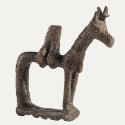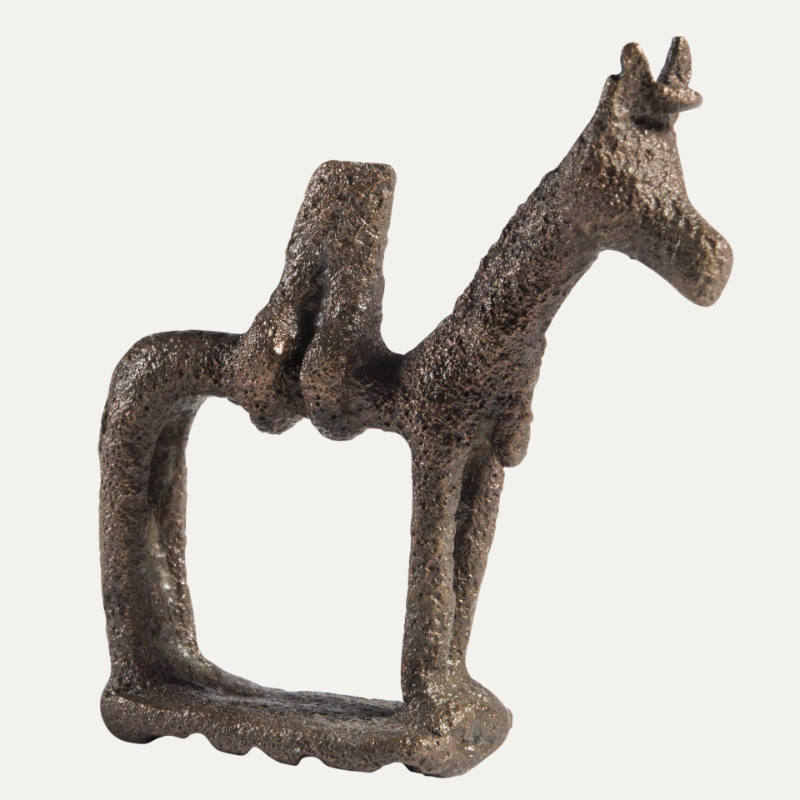Figurine
Χρονολόγηση8ος αι. π.Χ.
Date
8th c. BC
MediumΧαλκός
Medium
Bronze
Dimensions4.2εκ. × 4.1εκ.
Dimensions
4.2 × 4.1 cm
ClassificationΜετάλλινα
Classification
Metalwork / Figurines
Αριθμός ΑντικειμένουΝΓ0544
Object Number
ΝΓ0544
ΠερίοδοςΓεωμετρική περίοδος
Period
ΠεριγραφήΤο εικονιζόμενο ειδώλιο ίππου έχει μακρύ λαιμό, σώμα σε μορφή λεπτού κυλίνδρου και μακριά πόδια. Στη ράχη του ίππου κάθεται ανθρώπινη μορφή στο πλάι (διατηρούνται τα πόδια και μέρος του σώματος). Η στάση της ανθρώπινης μορφής αποκλείει την πιθανότητα του ιππέα και ορισμένοι μελετητές εκτιμούν πως πρόκειται πιθανότατα για κάποια θεότητα.Geometric period
Description
Further InformationThe illustrated horse figurine is rendered in a schematic way with elongated neck, cylindrical body and long limbs. This example preserves part of the torso and the legs of a human figure sitting sideways on the back of the horse. The position excludes the possibility of a rider, and some scholars believe that the seated figure might represent a deity.
Similar figurines have been found in major sanctuaries (Olympia, Delphi and elsewhere) and are considered as votive objects (offerings). The production of cast bronze figurines (casting in mould) of votive character began in the first half of the 8th c. BC. in various workshops in the Peloponnese, Central Greece, and the islands. They were intended as dedications in sanctuaries and represent male figures (deities, warriors, horsemen, charioteers) and animals (mainly horses and bovines). They are also found as decorative elements on handles of bronze votive cauldrons.
Ανάλογα παραδείγματα έχουν βρεθεί σε ιερά (Ολυμπία, Δελφοί κ.α.) και θεωρούνται αναθηματικά (αφιερώματα). Η κατασκευή χάλκινων χυτών ειδωλίων (τεχνική χύτευσης σε μήτρα), αναθηματικού χαρακτήρα, αρχίζει στο α' μισό του 8ου αι. π.Χ. σε διάφορα εργαστήρια της Πελοποννήσου, της κεντρικής Ελλάδας και των νησιών. Προορίζονταν για αφιερώματα σε ιερά και απεικόνιζαν ανδρικές μορφές (θεότητες, πολεμιστές, ιππείς, ηνιόχους) και ζώα (κυρίως άλογα και βοοειδή). Συχνά τα βρίσκουμε και ως διακοσμητικά στοιχεία σε λαβές από χάλκινους αναθηματικούς λέβητες.











